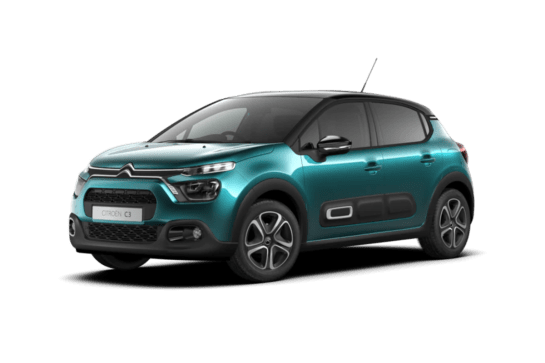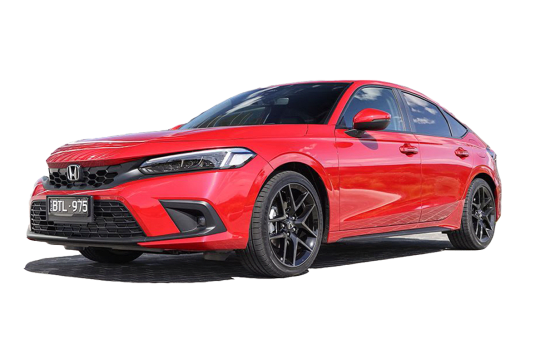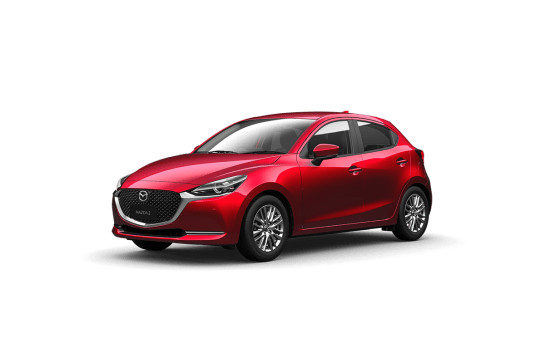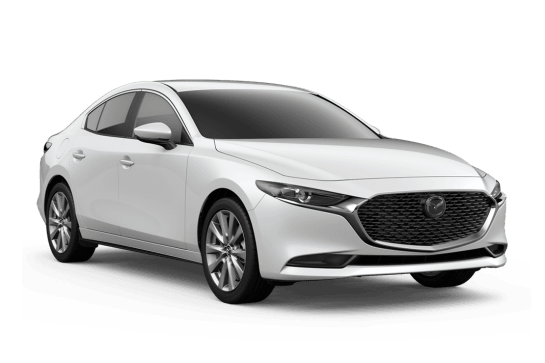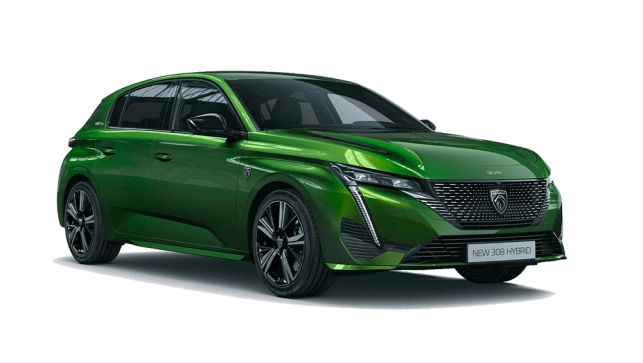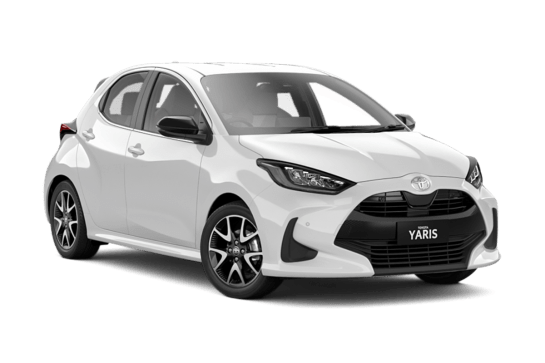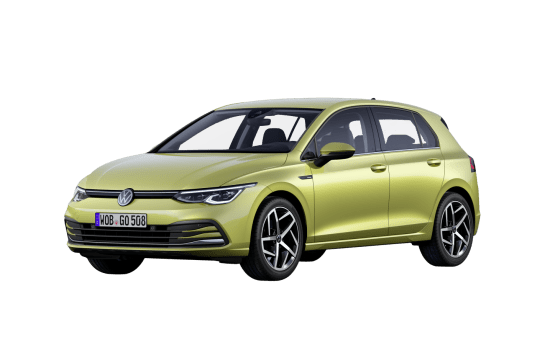
Suzuki Baleno VS Toyota Yaris
Suzuki Baleno
Likes
- Cheap to buy
- Light
- Big boot
Dislikes
- Expensive servicing
- Cheap interior
- Dull
Toyota Yaris
Likes
- Great ride and handling
- Superb fuel efficiency
- High level of safety equipment
Dislikes
- Might as well buy a Corolla?
- Noisy engine under load
- Diminutive back seat and boot
Summary
Suzuki Baleno
The fact of the Suzuki Baleno's existence is one of the more puzzling features on the automotive landscape. It's a car that pits itself against all manner of worthy competition - some of it exceedingly so - in the small hatch segment.
People still buy what the industry calls light cars (in ever-diminishing numbers) so perhaps Suzuki thought offering two would be a good idea, as its Swift occupies the same patch of sales ground in this city-sized segment.
In this part of the market, you've really, really got to want it. You need to be stylish, sophisticated and packed with tons of safety gear if you've any hope of so much as laying a fingernail on the Mazda2. Or, let's face it, be dirt cheap to counter Yaris and (the soon to depart) Accent.
It's all the more puzzling because Suzuki does interesting cars like the Jimny, Swift, Vitara and Ignis. And the oddball S-Cross (RIP).
The Baleno seems far too tame, timid and, well, blergh. But according to VFacts, Suzuki shifts at least a hundred of these per month, sometimes over 200.
| Safety rating | |
|---|---|
| Engine Type | 1.4L |
| Fuel Type | Regular Unleaded Petrol |
| Fuel Efficiency | 5.1L/100km |
| Seating | 5 seats |
Toyota Yaris
Small cars aren't what they used to be.
For the most part, I mean this in a good way. A lot of the remaining cars in this ever-diminishing segment are safer, higher tech, and better to drive than ever before. The problem is, they're also much more expensive.
Don't feel like you, dear reader, are to blame. Yes, demand has heavily shifted to the realms of SUVs for reasons most buyers can't properly articulate (they're just trendy, okay?), but there are also safety, expected equipment, and design pressures pushing once-cheap small cars out of Australia.
Maybe you're SUV-resistant (good on you), and you're wondering why the once-ubiquitous Toyota Yaris is now so expensive, and whether it's worth its newfound asking price. Let's find out.
| Safety rating | |
|---|---|
| Engine Type | 1.5L |
| Fuel Type | Hybrid with Regular Unleaded |
| Fuel Efficiency | 3.3L/100km |
| Seating | 5 seats |
Verdict
Suzuki Baleno6.5/10
The Baleno is a disappointingly dull car from a company that makes plenty of un-dull cars. I suppose it's prudent for Suzuki to at least try to look like a grown-up, but as this car proves, there's no fun in that.
It will no doubt be dependable and if kept in metropolitan areas, will serve its owners well. But it's lacking in key safety gear, the servicing is a bit on the stiff side and the interior feels cheaper than most of its competitors.
And on top of all that, it feels really old.
Is there anything tempting about the Baleno? Tell us what you think in the comments below.
Toyota Yaris7.8/10
The Yaris ZR hybrid is a very impressive little hatch. Small, agile, fuel efficient, nice-to-drive and safe, it's certainly set the bar to beat in the small car segment. The trouble is, all of this costs money, placing this particular version outside the budgets of many would-be small car buyers.
Design
Suzuki Baleno6/10
Suzuki says the Baleno's look reflects the brand's 'Liquid Flow' design language, but I'd much prefer it if they had stuck with the angular design of its other cars. Almost all of them are far better looking, or at least characterful.
The Baleno's recent facelift, which is mostly a new front bumper and a headlight tweak, was probably supposed to improve the looks but instead the car now appears to have had some fillers pumped into its cheeks.
It's not an attractive car from the front, with the grille overpowered by the lower fascia's sheer breadth. The rear and profile are fairly anonymous and to ensure its anonymity, there is little in the way of adornment. Looks basic, is basic.
Step in to the spacious-for-its-size cabin and you'll be greeted with the usual Suzuki staples of super-hard plastics, hardy carpets and tough cloth trim.
There is a little curvaceousness to the dash design but it just feels a bit half-hearted until the curves run into the centre console's alien-with-flappy-ears effect. There's nothing wrong with it but it does look dated.
Toyota Yaris
It's instantly identifiable as a Yaris, despite getting a significant design overhaul with the last generation. Toyotas don't have a unifying design language, but they do have key elements which tie them together, allowing each model to stand apart, but be recognisable as part of the greater Toyota portfolio, regardless.
This Yaris is much better looking than the generation which came before it, with lots of little detail points which make it an attractive small car to look at.
From the outside this includes curvy panel work which works its way from the button-nose and Toyota logo, all the way down the side of the car and to the boot lid in the rear.
There's big attention to detail in even the plastic fill panels, which carry a patterned texture to stop them from looking boring up-close, and our ZR is finished with a healthy serve of contrast black across its roof, in its alloy wheels, and on the integrated spoiler it wears on its tailgate.
It's a cool little car, a little bit cute, and a little bit sporty. It certainly needs to be at the asking price.
Inside sports Toyota's typical approach to interior design with some interesting touches. The Yaris gets some common themes, like the little cut-outs in the dash, the multimedia screen perched atop, and thankfully physical controls for the climate functions.
The seats follow the bucket-like theme of other ZRs, although, in this case they are finished in a light-patterned premium cloth trim, as opposed to the suede and leather ones in its larger Corolla sibling.
The three-spoke steering wheel is cool, as are the funky dot-matrix style dash elements, but the strange felt-like door trim, which also lacks padding for your elbow, is a bit odd. Still, it's an upgrade on the rough scratchy material used in lesser variants.
In typical Toyota fashion, there are quite a few hard plastic materials mixed in with the inclusion of a soft dash-topper, but the Yaris is a supposedly affordable small car after all.
Practicality
Suzuki Baleno7/10
Here's some excellent news - there is plenty of space in the Baleno's tiddly sub-four metre frame. The awkwardly-proportioned body has delivered good space for front and rear passengers who would be happier on more comfortable seats, but for city driving, they do just fine.
If you're up to around 180cm tall, there's enough space for you and your legs in the back and headroom is adequate.
Storage is a limited to a couple of open trays but you can put your phone in the same place as the USB port. You get two cupholders at the front and if you don't mind losing the rearmost of your storage trays, the back seat passengers can share it as a solitary cupholder. Each door has a very handy bottle holder that will secure a 1.5-litre vessel.
The boot is a good size for the segment at 355 litres to begin with and 746 with the 60/40 split fold rear seat folded down.
Toyota Yaris
The Yaris is small on the outside and small on the inside, too.
This means two things: Firstly this car is a breeze to park and it fits in lots of places, making it ideal to drive around the confines of a city.
On the other hand, there's been a clear design choice here to make the Yaris far from as boxy as it could be, focusing on the curvy looks at the cost of interior volume.
The Kia Rio, for example, does a great job of hitting both tight exterior dimensions with big interior ones, making it perhaps a better choice for those with families, although the Rio is set for the great scrapyard in the sky before long.
The inside of the Yaris adds up to a space which is clearly primarily constructed for the space and comfort of front occupants.
Adjustability is good, with telescopic and height adjust for the steering, relatively large comfortable seats, and a set of two surprisingly decent bottle holders in the doors with two more running down the centre console.
There's no armrest box, as it would impede the function of the centre airbag, so there's nowhere to rest your elbow, and the rare inclusion of a manual handbrake lever precludes the addition of further storage between the seats.
The dial-based climate control panel is welcome, and there's a small bay underneath for the storage of your phone, although, like every other storage nook in the cabin, the base is not rubberised, so objects will simply slide around when you're cornering.
The back seat feels very closed-in, especially in the ZR grade, which makes things worse with its dark headlining and heavy window tint, and while I still like the seat trim and large bottle holders in the doors, it's not hard to feel forgotten.
My knees have just a tiny amount of room from the driver's seat set to my own driving position (I'm 182cm tall), and even the so-so door trim is instead replaced by a plain plastic panel. There is also no centre drop-down armrest, nor is there a power outlet.
A caution for those with kids: The rear door doesn't even open very far, so it strikes me as being difficult to work with for the placement of child seats.
The boot also offers a tiny 270 litres, just big enough for our largest CarsGuide demo case but not the other two in the set, which is actually only 124 litres once you include the thickness of the case itself and the wheels.
Price and features
Suzuki Baleno7/10
For $16,990 drive away, Suzuki opens the range with this GL. That scores you 15-inch steel wheels with less than fetching hubcaps, a six-speaker stereo, air-conditioning, reversing camera, remote central locking, cruise control, sat nav, auto halogen headlights, power mirrors and windows, and a space-saver spare.
A 7.0-inch touchscreen that you can find in almost every Suzuki handles the sat nav and entertainment duties. It's not a bad piece of hardware except it doesn't have a proper volume knob, but more than makes up for that with Apple CarPlay and Android Auto. Then ruins it again with tinny sound. You can't have it all, I suppose.
Toyota Yaris
The ZR Hybrid version we're reviewing here is the ultimate version of the standard Yaris range - excluding the unhinged, rally-bred GR Yaris which only shares a handful of body panels with this car, anyway.
Costing from a frankly wild $33,100, before on-road costs, it's a far cry from the once sub-$20K car the Yaris used to be. It wasn't even that long ago (2020) you could pick up the previous-generation Yaris SX in automatic guise for just $19,610, before on-roads.
This new Yaris is truly 'new' though, built entirely from the ground up to suit Toyota's TNGA platform philosophy, and it's also the first time you can buy a hybrid one.
The result is one of the most recently engineered small cars you can buy in Australia, a far cry from the ancient MG3 or ageing Mazda2.
Is this worth a lot of extra money? To many buyers in this small car segment the answer is probably not, judging by the fact the MG3 is now outselling the Yaris at an insane ratio of 8:1. But standard equipment is impressive regardless, especially at this ZR grade.
Included are 16-inch alloy wheels, LED headlights, a 7.0-inch multimedia touchscreen with wired Apple CarPlay and Android Auto connectivity, built-in sat-nav, a 4.2-inch multifunction display and dot-matrix-style dash cluster elements, a head-up display, a leather-accented steering wheel, sports seats with cloth upholstery, single-zone climate control, alongside one of the most comprehensive safety suites in the small car segment.
The unique selling point is the hybrid system, though. It makes the Yaris one of the most fuel efficient cars without a plug in Australia - but perhaps by far the biggest issue facing this car is an equivalent ZR Hybrid Corolla costs just $5020 more.
Under the bonnet
Suzuki Baleno6/10
You'll not need to hold on to your hat in the Baleno. The 1.4-litre naturally-aspirated four-cylinder musters up 68kW at 6000rpm and 130Nm 2000rpm earlier. It's not a lot, but at 915kg, the Baleno isn't doing too badly.
There's an old relic in the transmission department. Power reaches the front wheels via a four-speed automatic transmission. There aren't many of those left in circulation on new car forecourts.
You can't buy a Baleno with the plucky 1.0-litre turbo anymore, which is a bit of shame.
Toyota Yaris
The Yaris ZR hybrid pairs a 1.5-litre three-cylinder Atkinson-cycle petrol engine with an electric motor set-p on the front axle.
The engine on its own produces 67kW/120Nm, but is assisted by an additional 59kW/141Nm from the motor.
Combined, they are capable of producing a peak 85kW. It's about right for the segment the Yaris plays in, and of course there are advantages of the electrified set-up when it comes to acceleration, smoothness and fuel consumption.
The forces of both drive the front wheels via a silky smooth continuously variable transmission, which makes the switch between the two power sources seamless to the driver.
Efficiency
Suzuki Baleno7/10
Suzuki says you'll get 5.4L/100km on the combined cycle, which isn't too far off reality, our time delivering around 6.6L/100km. Which was remarkable in itself given how much throttle you have to use to move along.
Another bonus is that even though the fuel tank is just 37 litres, you won't spend half your life filling up.
Toyota Yaris
Fuel consumption sits at 3.3L/100km for the ADR combined cycle, which is one of the best fuel consumption figures for any car without a plug.
This figure will depend a bit on how you drive it, though, with my consumption for the week hitting a more reasonable 3.8L/100km in largely urban testing, which are ideal conditions for this configuration.
I am curious to know what conditions make the 3.3L/100km achievable (it certainly seems achievable), but the figure I scored is immensely impressive regardless.
You can even fill the Yaris with entry-level 91RON unleaded, and the 36-litre fuel tank makes for over 1000km of range if you can score closer to the official fuel consumption.
Driving
Suzuki Baleno6/10
Most Suzukis are fun to drive even if they're on the slow side. The Jimny bounces around like a fat puppy full of sugar, the Swift is a good laugh and the Vitara is quite handy. The Baleno fails to be any of these things, but it's not all bad news.
The first thing you'll notice is the very light steering that makes a high-pitched noise when you turn it.
The second thing you'll notice is the whine coming from the transmission or somewhere very like it, no matter how much throttle you have on. It shifts smoothly enough, though, which isn't very often given the lack of gears.
It's not often I yearn for a CVT, but that might be the better transmission for this car. Yes, I just checked outside for airborne pigs, too.
The Baleno does feel like it teeters a little on its skinny, high profile tyres. It's not a car to drive with enthusiasm, but if you're happy enough with its almost-lively off-the-mark acceleration, which then fades away rapidly, you'll be perfectly happy.
It's not very quiet, though, with plenty of noise passing through the trademark thin sheetmetal and sparingly damped shell. It's light, but you can hear why - there's not much sound-deadening to weigh it down.
On the open road the Baleno further reinforces its credentials as a city car - it wanders around on the tyres, the steering loses all its feel and the wind noise means you have to turn up the volume to either drown it out or make yourself heard.
Toyota Yaris
The Yaris shines when you hop behind the wheel. This car is not just great to drive, it is benchmark setting for the whole segment.
Toyota's TNGA chassis philosophy is on full show, with the components here combining for a nice ride, gentle but meaningful steering feel, and smooth, quiet acceleration.
It feels like a car with the ride and feedback characteristics of something much more expensive, which speaks to its new-from-the-ground-up formula.
Older cars in the segment can't hold a torch, while even the better-to-drive examples like the Suzuki Swift and Kia Rio lack the poise or polish of the Yaris, not to mention the hybrid system.
The system itself makes the fuel sipping tech addictive to use, with the drive indicator dial in the dash cluster making it obvious where the engine will turn on.
This helps you tailor your driving style to maximise your time using the electric motor only, boosting fuel efficiency.
Even the execution of this system is at its best here in the Yaris, which is light enough that significant amounts of acceleration time can be spent in pure EV mode.
It's not rapid, however. Yes, there's sufficient go from the combined 85kW to get the Yaris moving off the lights, but this drivetrain isn't engaging, making it tough to match the great handling characteristics on offer here.
The Yaris eats up corners in its stride, but really misses the turbo surge or engaging gear shifts of some of its rivals.
Like all hybrid Toyotas, this particular combination is a little unpleasant to drive more aggressively, as the little three-cylinder Atkinson-cycle unit gruffly revs its heart out, breaking the EV-veneer and eating into the otherwise impressive cabin ambiance.
Safety
Suzuki Baleno6/10
Sadly, the Baleno is not among the frontrunners for safety features. It does arrive with six airbags, ABS, stability and traction controls and a reversing camera but misses out on every advanced safety feature we expect to see at least one or two of, such as AEB.
There are two ISOFIX points and three top-tether restraints for the baby and child seats.
The Baleno does not have an ANCAP safety rating.
Toyota Yaris
If you're looking for a safe small car, the Yaris, particularly in ZR spec, is about as good as it gets.
While it also accounts for the high cost-of-entry for this model, you could argue the inclusion of comparatively high-end features like freeway-speed auto emergency braking, adaptive cruise control, lane keep assist, blind-spot monitoring with rear cross-traffic alert, and even eight airbags, including a centre airbag, is worth it.
The Yaris range (excluding the GR version) scored a maximum five-star ANCAP safety rating in 2020, a particular achievement, as it is to a much more difficult rating criteria compared to the Swift and Rio which were both rated five stars in 2017.
Ownership
Suzuki Baleno7/10
Suzuki has joined the mainstream market herd with a five year/unlimited kilometre warranty for private use (ie not Uber) but there isn't even a solitary year of roadside assist.
Happily, since we last drove the Baleno, service intervals on the 1.4-litre have improved to 12 months/15,000km (rather than the previous 10,000km) and the company also offers five years of capped pricing up to 90,000km.
Services come in between $239 and $499, unless you've somehow covered 90,000km inside the five year window, and then it blows out to $649. That last figure aside, you can expect to pay $1635 over five years (or $2045 if you go nuts on the mileage). It's not especially cheap.
Toyota Yaris
Like all Toyotas you can expect a five year, unlimited kilometre warranty with the Yaris, which is extendable to seven years if you stick to the official service schedule.
We recommend you do, not just because you keep your warranty, but because it's so affordable, you might as well.
The first five years of servicing for the Yaris hybrid is capped to just $245 a year. It needs to see the workshop once every 12 months or 15,000km, whichever occurs first.
Combine this with the low fuel consumption, and the total cost of ownership here is impressive.


